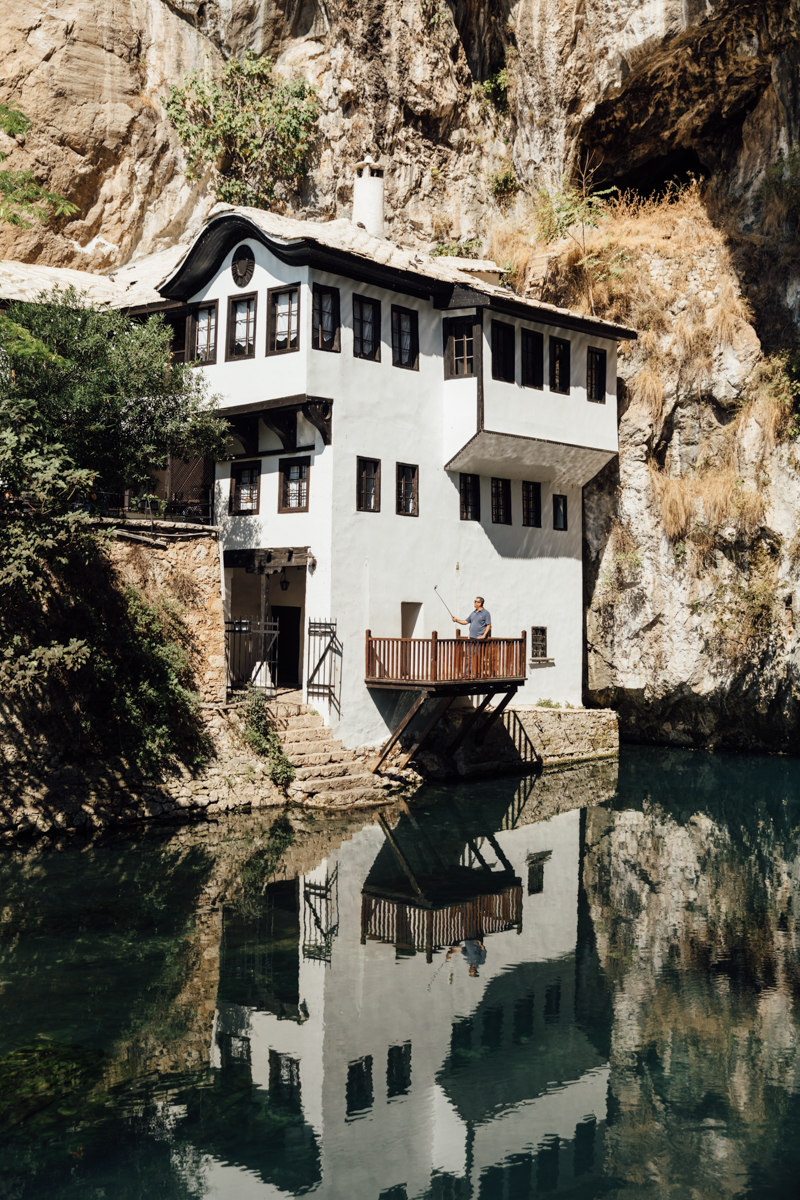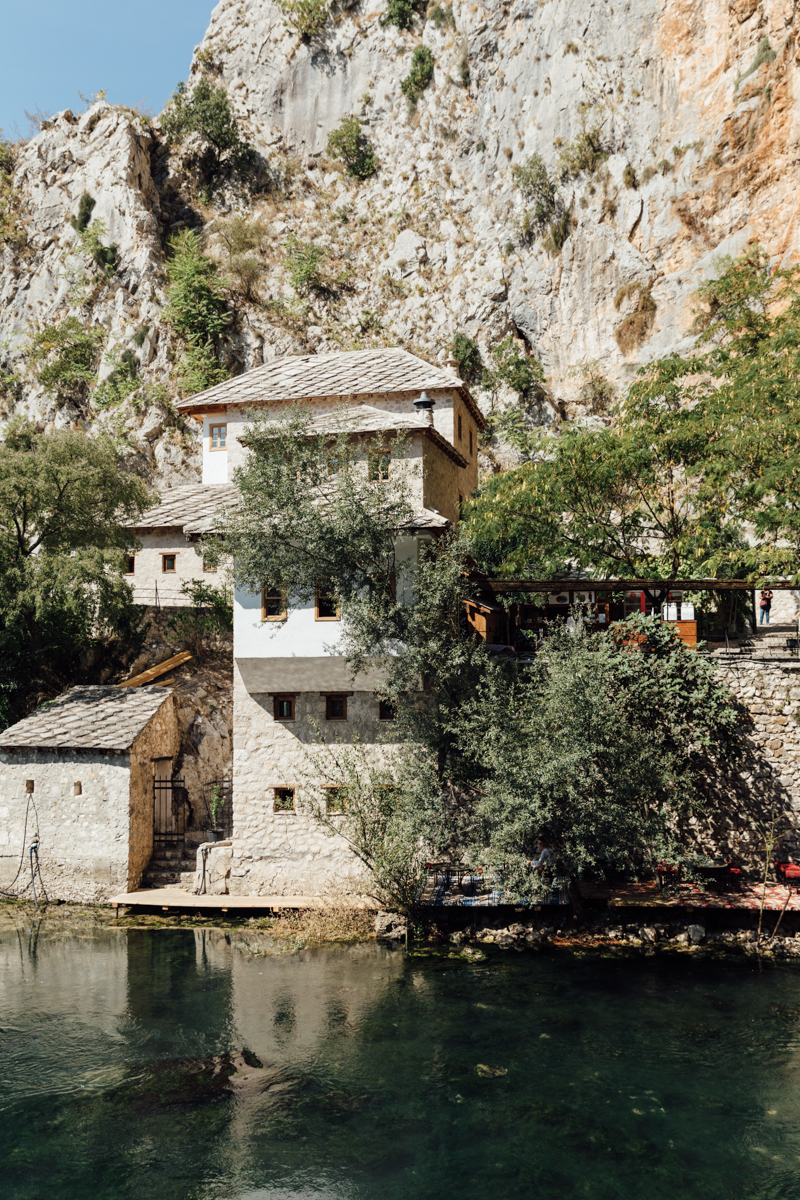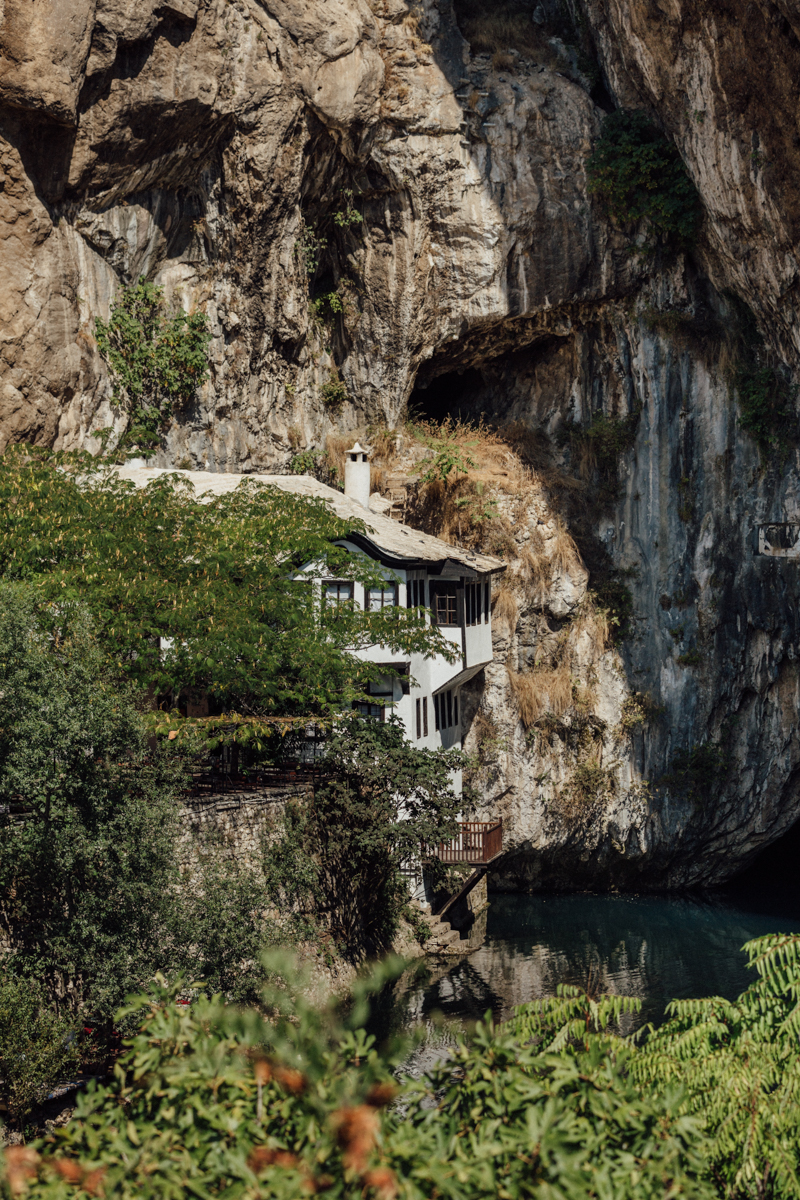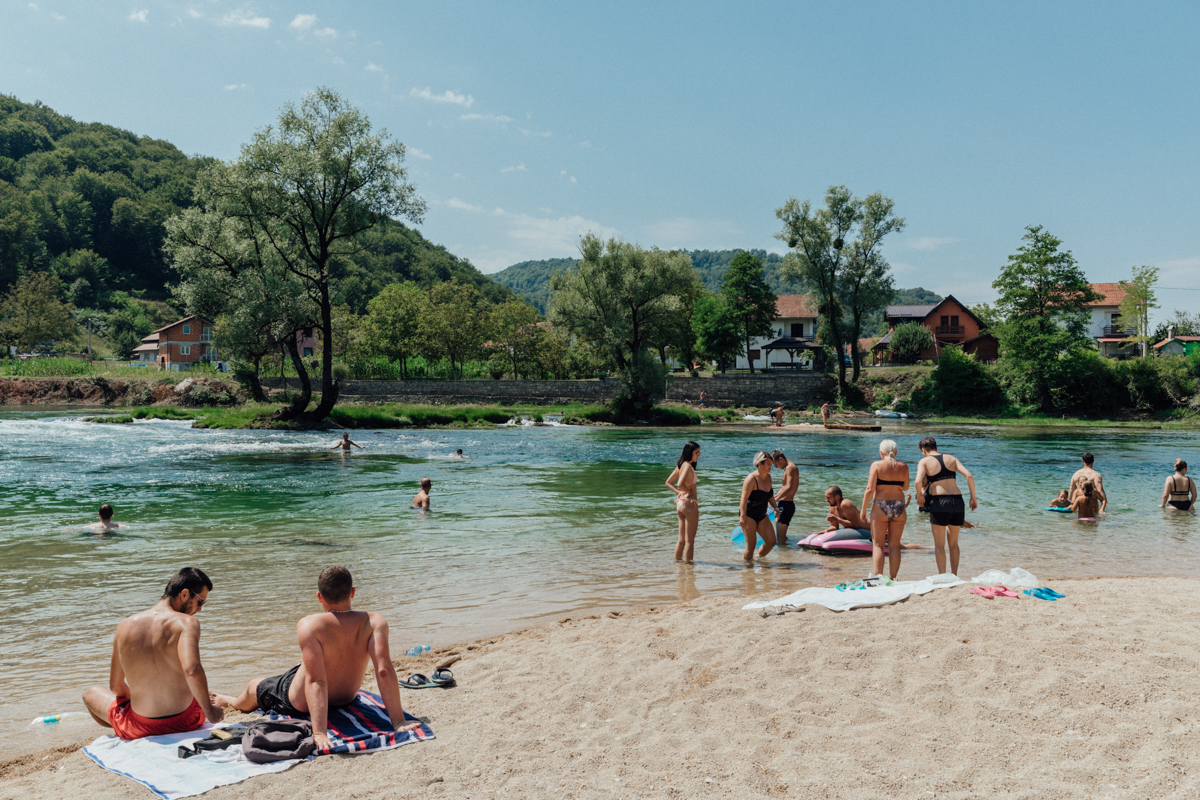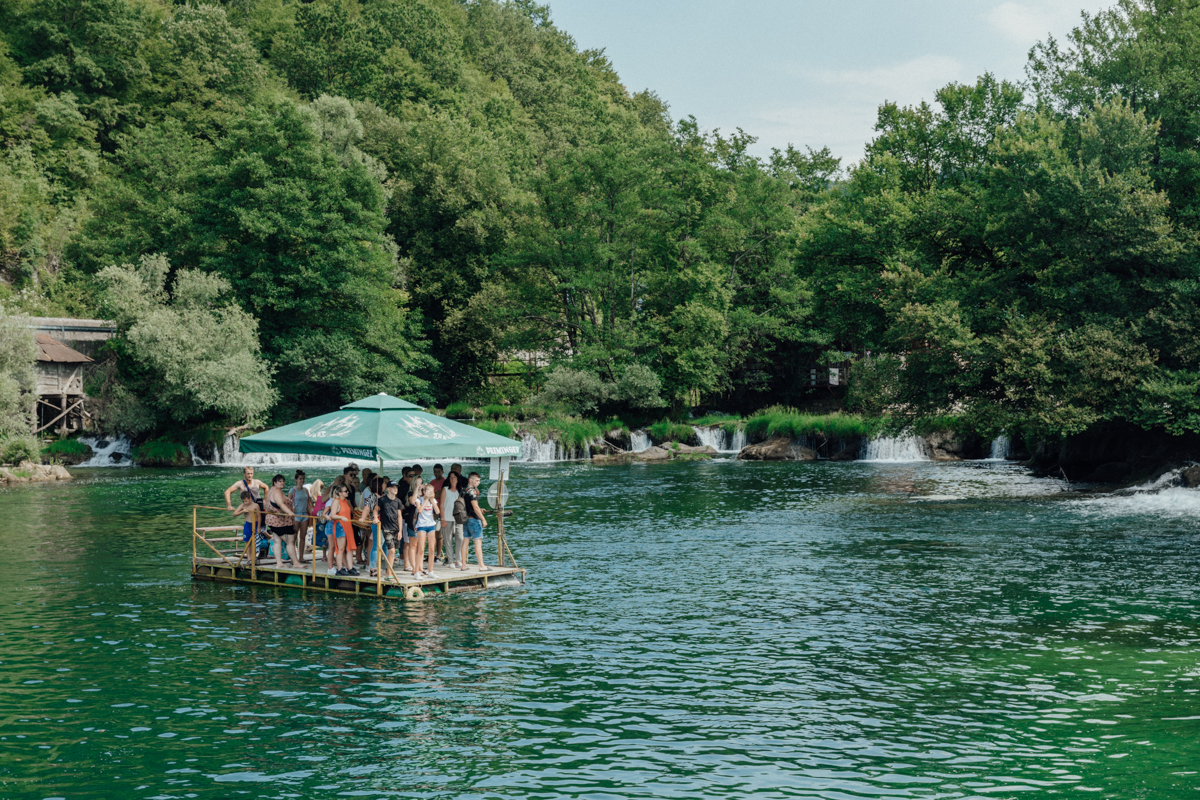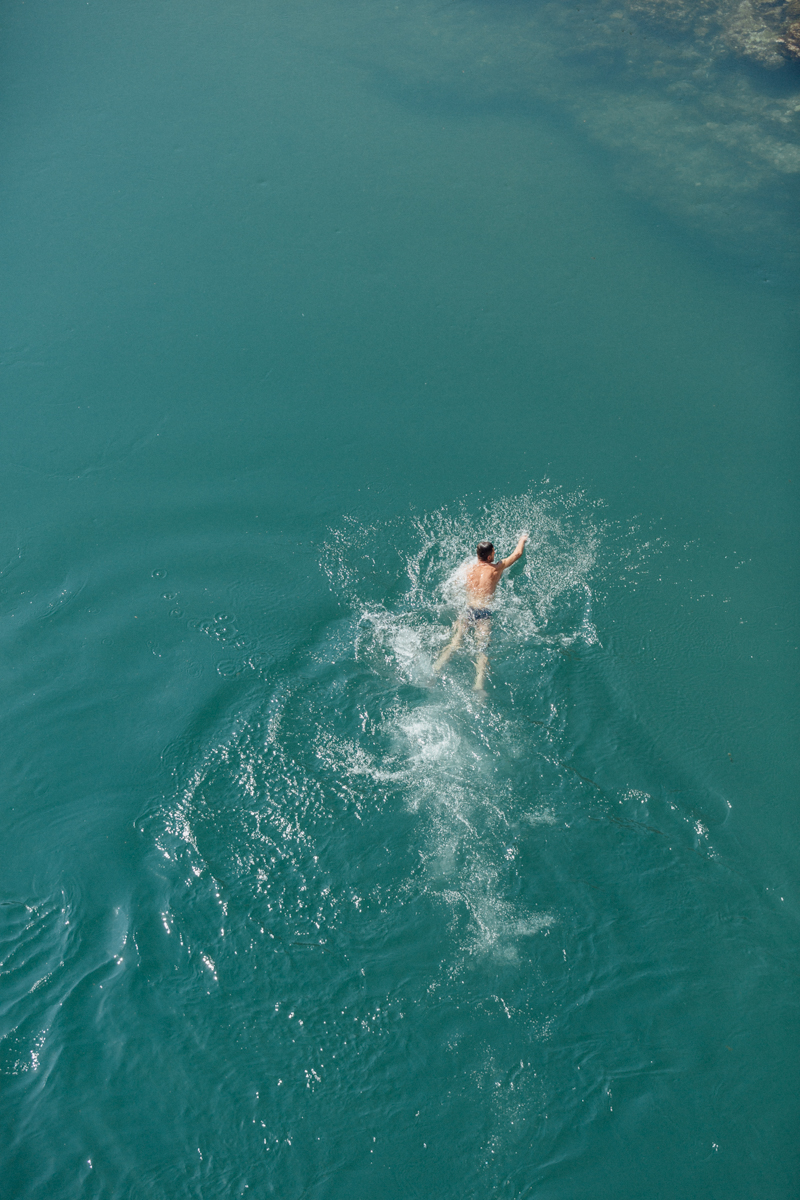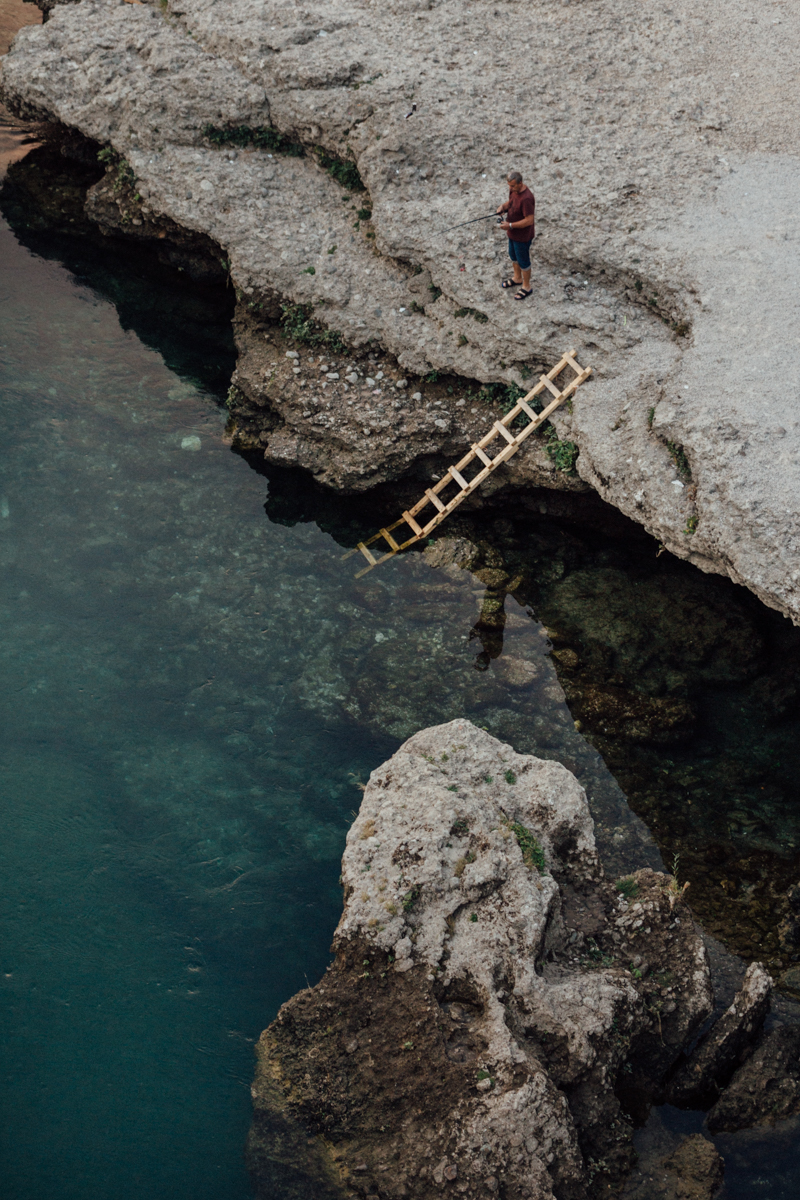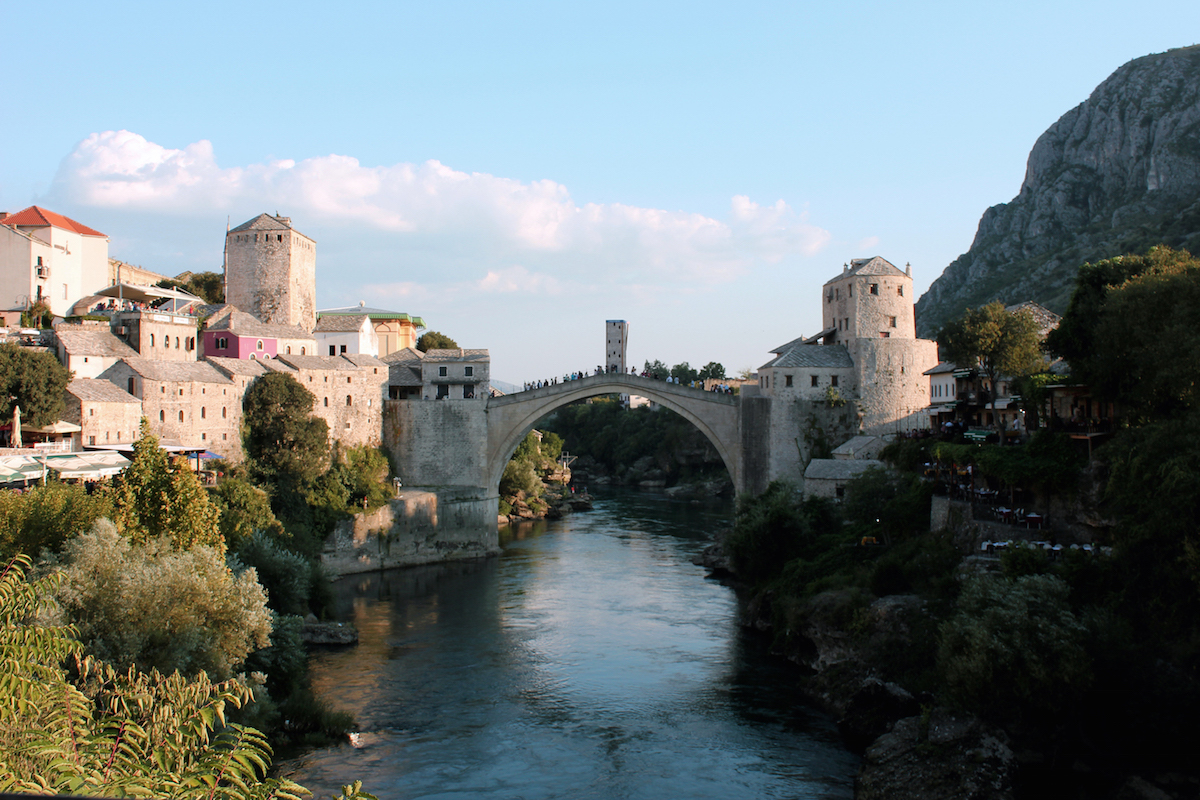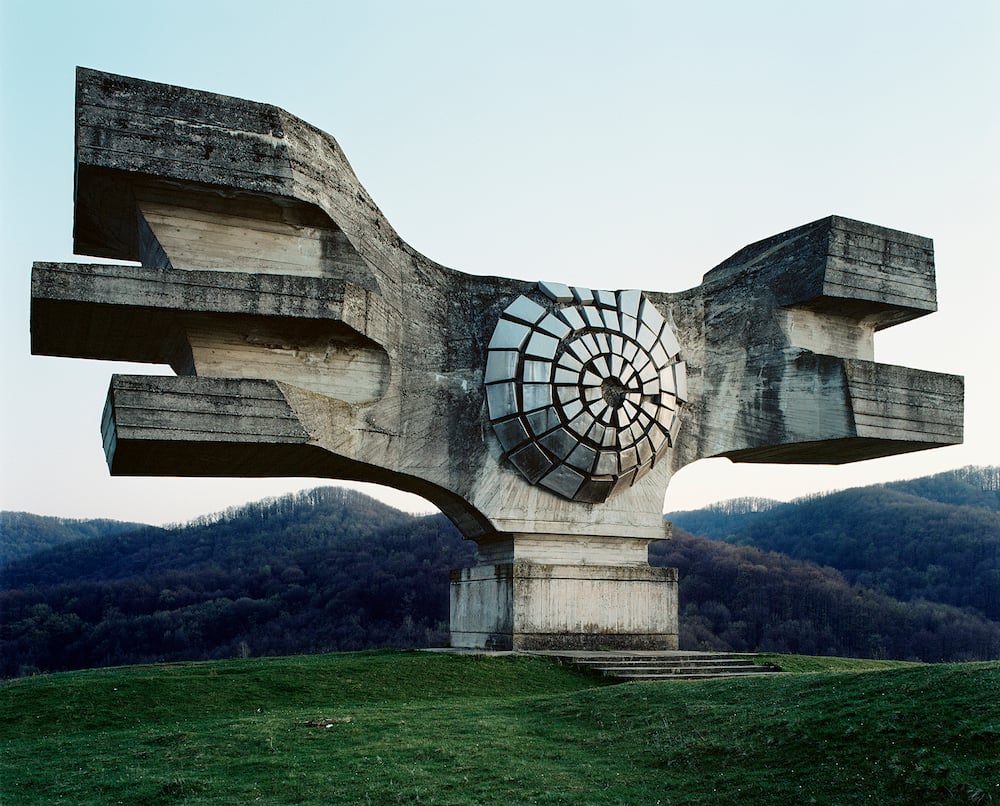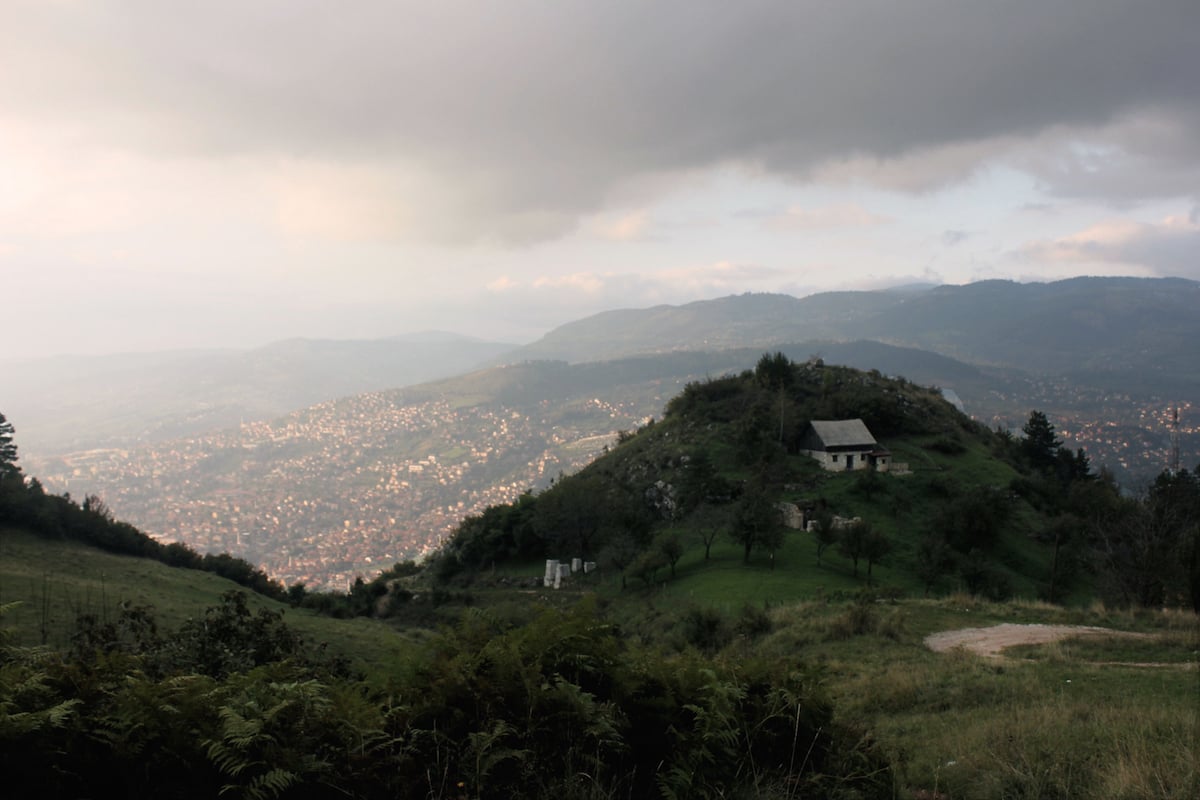Peaks and waterfalls: roam the beating heart of Bosnia and discover the country anew
Astonished at the surprisingly common misconception of Bosnia as a country still in the midst of active conflict, Melbourne-based writer Ennis Cehic travelled back to his homeland with Australian photographer Shantanu Starick in a deliberate effort to show the true beauty of its land and people. New Metonyms: Bosnia & Herzegovina is an unusual photo book interspersed with poetry, short stories, and a personal essay on re-connecting with a displaced identity.
“I wanted to ensure that the feeling my book created for the reader was one of a Bosnia that isn’t defined by war,” says the writer, who fled his homeland in the early 90s in the midst of the Bosnian war.
The question that drives the book is: how do you distill a place to a single, representative image? The truth is you can’t, so Cehic suggests a wealth of contemporary landmarks, monuments, and emblems — from a hidden Sufi lodge on the outskirts of Mostar to the country’s rivers and thermal waters — that have no association to its wars. This evocative excerpt from the book’s central essay introduces some of these “new metonyms” that will make any armchair traveller long to get up and see for themselves the real places stunningly rendered in Starick’s vivid photographs.
France is Paris, the Eiffel Tower, cheese, and the Louvre. The UK is Big Ben, red telephone boxes, even Sherlock Holmes. The Statue of Liberty, Washington Hill, and McDonalds is the USA. Brazil, the statue of Cristo Redentor or the Copacabana. But less known places are harder to define into single icons. Some cities and nations that exist in our collective imagination as metonyms often derive their meaning not from great accomplishments, architecture, or art, but from incidents of misfortune. We perceive Chernobyl to represent a catastrophic nuclear accident — which, in 1986, obliterated not only the geographic area northeast of Kyiv, but also its literal meaning. From the moment the nuclear tragedy struck, the place extended itself to mean the incident.
Such is also the case with Bosnia and Herzegovina.
For many, the mention of Bosnia still conjures up images of war, suffering, exile, and genocide. This is unlucky, but true: war and its remnants cannot — unfortunately — be avoided here. But what if we tried to uncover metonyms of Bosnia that are free of connections to war? From both its natural and historical phenomena? Natural because of its wonderful, geographic reality; historical because of the role people have played in it. By taking a closer look at these two qualities, we can realise a much warmer feeling for this country we call the heart-shaped land of the Balkans.
As a diasporic person, you learn that it’s in fact really easy to leave your country. What is difficult is leaving its history
Lukomir village on Bjelašnica mountain
Vrelo Bosne
Bosnia’s purest metonym
From the Old Town, it takes approximately 45 minutes to get to Vrelo Bosne, the spring of the Bosna River just outside the township of Ilidža. The tram passes, like all traffic, down the main linear thoroughfare that takes you through every part of Sarajevo. Most of the trams are old, with windows free of advertising placards, providing a rare opportunity to take in the expanse of this valleyed city. As you get further away from the tightly built-up city centre, more of the distant, steep mahalas [neighbourhoods] become visible, open to view without the towering socialist buildings that block the vistas from the inner thoroughfare. The final destination is the central bus and tram station of Ilidža.
When you get out, you’re immediately welcomed by street hustlers selling everything from underwear to calendars, t-shirts to gloves, depending on the season. From there, you catch a taxi to the foothill of Mount Igman where Vrelo Bosne emerges.
Vrelo Bosne, also known as Spring of the Bosna river
Mount Igman acts like a natural curve around this spring. Bosna river emerges out and veins itself through small wooden bridges, swan ponds, tiny creeks, and waterfalls before it broadens, becoming the longest watercourse of the country, flowing like a purposeful artery. While traces of life and civilisation have been found here that date to the Neolithic period, it was the Ottoman Empire, upon their complete control of the region from 1463, that first began to turn this area into a settlement. With an abundance of natural mineral and thermal waters, they built spas and hamams, naming it Ilıca — meaning “thermal bath” in Turkish.
For Bosnians, there’s an obsessive association with this place. Reminiscent of a pilgrim’s journey, Bosnians descend upon Vrelo Bosne chestly. Here, the young and the old stroll meditatively, before they continue through the park to the grand promenade that takes them past the famous, stately villas of Ilidža. In summer and spring, when they see the water ripple and shimmer, a kind of collective synergy occurs —they begin a ritual I have seen many times. They kneel down and dip their hands into the flowing water. First, they splash it around their hands to feel the iciness. Then they rub the cold water over their necks, and their faces. To me, it always seems a religious-like act, something one would do at prayer. I’ve often thought that the water flowing over their hands is no longer a mineral substance to them, but a metaphoric proof of the uniqueness of their country. Having seen this many times, I felt somewhat annoyed at the continued fixation of my people with this little spring of water. But for those who were exiled and became part of the diaspora after the war in the 1990s, being at Vrelo Bosne is imbued with meaning. It marks a return to the heart of the country — the birthplace of its complicated existence.
Sarajevo Mahalas
The act seems righteous, almost necessary because the river Bosna is the namesake of the country, and thus, Bosnia’s purest metonym — utterly absent of war. This connection also extends to the lineage of its people’s complex history, nature, and genealogy. It’s tied to the linguistics of the prehistoric Illyrians that lived in this region. Bosna is derived from the Illyrian Bass-an-as(-ā) meaning “the running water”. The Romans who invaded Bosnia during the Greco-Roman period also adopted this name, and the Slavic settlers that arrived in the seventh century, and stayed, adapted the Latin designation of Basante as their own idiom and called the river Bosna, and themselves Bosniaks.
Blagaj Tekke
A Sufi Sanctuary
In the small town of Blagaj, just outside the city of Mostar, an early 16th-century Dervish Tekke (monastery) rests against the edge of a cave on the spring of the Bune River. It’s an old landmark; but to me, as an untarnished place, it’s a new metonym of Bosnia because Sufism is about the education of the heart. It teaches love, tolerance, and reinforces the connections between the Abrahamic religions. And here, this matters, because Bosnia is a country that lives with religious diversity. Built in 1520, only a few decades after Bosnia came under Ottoman rule, this beautiful Sufi lodge served as a holy house for Islamic teaching, philosophy, and learning. Almost all of it has been preserved.
While today the Dervish Tekke is still a holy place, it’s open to the public. As you descend down the stairs of the main lodge, and come under the opening of the terrace that overlooks the pristine water that leads into the cave, a marble plaque with a surah from the Holy Quran is prepped up on the wall. It reads “and we have made from water every living thing.”
I remember staring at this inscription. I was mesmerised by its profundity, and it left me contemplative for the rest of the day. But later, it dawned on me that the reason it was there for all to consider wasn’t only in light of the teachings of Islam, but also of Bosnia. While this is a poetic remark about the scientific history of humanity, it’s as if it is there in gratitude to Bosnia’s numinous association with nature. Like many others that have trodden, wide-eyed over this land, the old Sufis were mesmerised by its beauty — especially its rivers.
Ada on the Una
A summer getaway
Bosnia is divided by seven rivers in total. All of them — the Una, Sana, Sava, Vrbas, Bosna, Drina, and the Neretva — gush around the curves of the land like slithering winds. Many are also vicious. They pulsate with intense currents that are only more illuminated by their icy greenness, like enchanted rivulets that appear in fairy tales. And in summer, all across the country, their banks portray a different kind of image of Bosnia. Men and women lie, sunbaking on its shorelines, chit-chatting leisurely as if on vacation. Children and teenagers can be seen jumping off makeshift rafts and boards, plunging laughingly into the icy, emerald waters. It’s the same sight everywhere, from the clay banks of the Vrbas in Banja Luka, to the stone-huddled banks of the Neretva in Konjic. They are beautiful slices of Bosnian summer. But for me, this spectacle is most enchanting on the Una in the north.
In a town called Bosanska Otoka, there’s a small landmass, a kind of island that the locals call ada. Accessible by a makeshift raft only, the island rests between low waterfalls and streams of the Una that runs serenely around it. This setting is most metonymic here, it epitomises the Bosnian summer bliss. Every time I’m there, I think about what my life would’ve been like if the war never happened; if I hadn’t been exiled from my village, a mere 35-minute drive up the road. Would I have been here myself during many summers, soaking up this little gem of natural beauty?
It’s these kinds of images that Bosnia conjures up for me now; that make me feel intensely connected to the land, that make me see that “her fields are village blankets spread out to dry in the golden Bosnian sun”. It’s poetic praises like these, sung and noted down by foreign travellers, that begin to make perfect sense to me.
Is Bosnia safe? Aren’t there landmines everywhere?
Doesn’t everybody hate each other in Bosnia? Is the country developed? These are some of the questions people still ask of me, as if the country were still in the midst of an active conflict.
They are also one of the reasons why this book has come into existence.
As a diasporic person, you learn that it’s in fact really easy to leave your country. What is difficult is leaving its history, as it follows (or leads) you like a shadow. The history of Bosnia has always confounded me. I sometimes feel that I seek an impossible connection, because I’ve been displaced since a young age. Its progress and change since the war have eluded me. But over the years, the further Bosnia distanced itself from me, the greater my curiosity grew. And now, despite its various political and ethnic complications, Bosnia won’t let go of me. I’m tied to it like I am tied to language as a writer: the possibility and impossibility of both pull at me with the same voracious intensity. Sometimes, understanding the world requires taking a certain distance. Today, I feel that this space and remoteness between us has been a kind of delayed fortune. It has let me observe with fresh eyes. To learn and draw new images, in and out of it.
Our aim of this project was not to construct an image of typicality; show people where to go, what famous sites to visit. But instead, to provide a feeling for the country by fusing the media of photography and literature with a collection of potential new metonyms. Metonyms that show that Bosnia can be known for pristine mountains and unrivalled swimming banks next to crystal-clear rivers. Sculptural architectural monuments and timeless Balkan villages. Spontaneous urbanism of folkloric mahalas. Ancient, stone-huddled Ottoman-era towns and Sufi lodges that educate hearts. Surprising Adriatic coastlines and modern, up-and-coming cities. A cheerful national spirit and incorrigible optimism despite centuries of suffering and oppression.
New Metonyms: Bosnia & Herzegovina (2020) is available to purchase at newmetonyms.com with worldwide shipping.
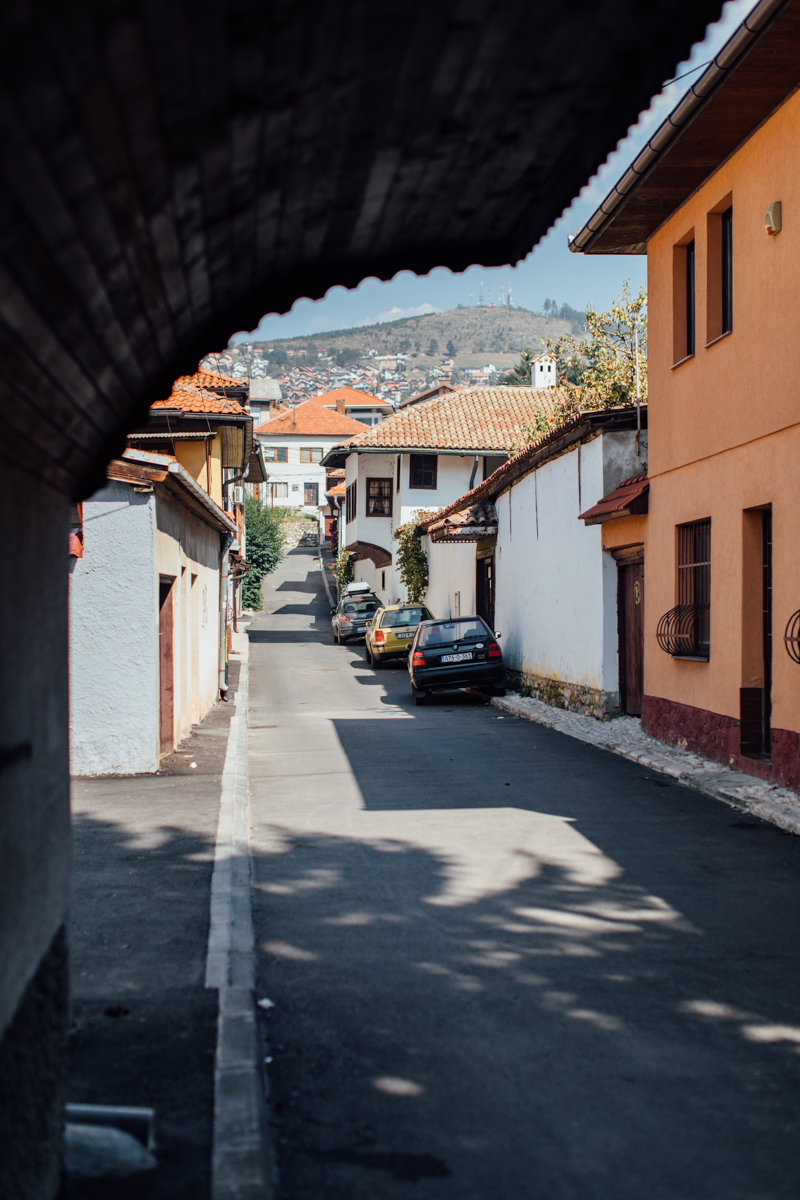
—2020.jpg)
—2020.jpg)
